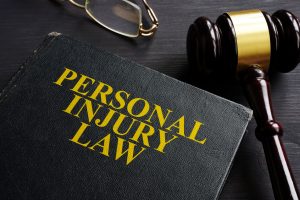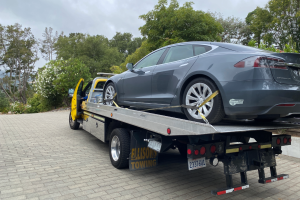David Smith, Vice President of Alpine Engineering & Design, offers his insights into product liability lawsuits and the role expert witnesses can play.
What is the basic premise of product liability law?
Product liability is the term used to describe the legal liability of manufacturers or sellers of goods to compensate buyers, users or bystanders for damages or injuries suffered because of a defect in the product. Product liability, in general, is incredibly broad as “product” can refers to any tangible property. The question that we are usually trying to answer is whether or not the injury was because the product was unreasonably dangerous, or whether it was a result of improper use, carelessness or some other reason.
What key laws and regulations oversee product liability in the US?
There are very rarely specific legal requirements that apply directly to manufacturers or distributors of equipment. OSHA regulations are law, but only for the employer. Consensus standards from organisations like ANSI and ASME provide good information and best practices, but compliance is voluntary; they are not legal requirements. What it usually comes down to is whether or not the manufacturer or distributor should have been aware of the risk, and whether they took appropriate steps to reduce the risk to acceptable levels.
OSHA regulations and voluntary standards are a great place to start. If the product is not in compliance with the applicable standards, it is very likely that the risk is high and the product it is not as safe as it should be. However, even if a product is in compliance with all of the applicable standards, it can still be unsafe.
The question that we are usually trying to answer is whether or not the injury was because the product was unreasonably dangerous, or whether it was a result of improper use, carelessness or some other reason.
What should manufacturers be doing to ensure they have reduced their product’s risks to acceptable levels?
Manufacturers should include risk assessments throughout their development process. They should also perform and document risk assessments on existing products. There are multiple books, documents and consensus ANSI standards that describe the design review and risk assessment process. Some of my favorites are ANSI B11.19, ANSI B11.TR3, ANSI Z590.3, and Military Standards 882D and E. During the risk assessment process, the manufacturer (or a consultant like us) takes deliberate steps to identify the hazards associated with the product. There are multiple documented tools for identifying hazards.
Then they determine the level of risk associated with each hazard. Risk is a combination of how likely someone is to get hurt by a hazard (probability of occurrence of harm) and how badly they could be hurt by that hazard (severity of harm). If the risk is above an acceptable level, then steps should be taken to reduce the risk. The risk reduction hierarchy specifies the most effective ways to reduce risk:
- Design it out.
- Safeguard against it.
- Provide warnings.
- Use administrative controls.
Once these steps have been implemented to reduce the risk, the team should once again evaluate to ensure that the risk has indeed been reduced to an acceptable level and that no new hazards have been introduced. The entire process should also be documented. Interestingly enough, I have never seen a lawsuit against a manufacturer that had a documented risk assessment for the product.
How do some manufacturers often fail to meet the standards necessary to legally perform risk assessments on their equipment before taking it to market?
Risk assessments and design safety reviews are not topics that are covered in most engineering curricula. The closest they come is a basic failure modes and effects analysis (FMEA), which looks at what might happen if something breaks or fails. A basic FMEA is a part of a risk assessment, but is not a substitute. Often, the design engineers and even the engineering managers have no idea what risk assessments are or how to use them. On the other hand, a risk assessment is a basic tool for a safety professional, and companies that want to start implementing them can hire a safety professional full-time or can hire a consultant (like AED) for a specific project or to teach the process to their people. It is unfortunate that risk assessments are not more commonplace in the equipment industry; they are a simple and effective tool for reducing unnecessary injuries and death.
Interestingly enough, I have never seen a lawsuit against a manufacturer that had a documented risk assessment for the product.
Conversely, are there any common accusations plaintiffs make against manufacturers in product liability cases that may not have real grounding?
Not every injury that happens is the result of a defective product or a product with high risk. Plaintiffs often fail to recognise that risk is based not only on how badly someone was hurt but also on how likely the circumstances that caused the injury were. They often fail to recognise that the injured person had to disregard several controls and warnings for the incident to ever happen.
Plaintiffs also need to be careful when proposing safer alternative designs. All too often, the proposed “safer alternative designs” might look nice on paper but would not actually work in real life situations. There was one case where a container came out of the latches of a rear-loading refuse truck and ultimately killed an operator. The proposed safer alternative design was to put a sensor on the latch to make sure it was secured in place before it was lifted. However, they failed to realise the tremendous forces that are applied in the hopper area that would certainly crush and otherwise inhibit the function of the sensor.
How do you communicate the nuances of these issues to your audience as an expert witness?
Our reports will usually look quite different depending on the facts of the case. We always like to inspect the equipment to see how it worked and what failed, and to compare the current state with the as-manufactured state. We perform testing so that we can show how the accident would have happened and what could have been done to prevent it. When supporting the plaintiffs, we typically walk through the steps of the risk assessment process one by one and look at the different factors that the standards suggest be considered when determining probability and severity. When possible, we also like to build the safer alternative designs and show how it would work or be implemented on the equipment. On the defence side, we look at and highlight what the manufacturer did do to increase the safety of the design, and more often than not, through our testing we can highlight where the operator went against the training, ignored warnings, removed guards or even rewired the equipment to bypass a safety sensor.
[ymal]
David Smith, Vice President
111 W Canyon Crest Rd, Alpine, UT 84004
Tel: +1 801-763-8484
David Smith
I am the Vice President of Alpine Engineering & Design, Inc. (AED). I have a master’s degree in mechanical engineering and an MBA with an emphasis in product development. I am a licensed professional engineer (PE) and a certified safety professional in comprehensive practice (CSP). I started working at AED in 2006. AED is a mechanical engineering consulting firm that focuses on industrial equipment design and forensic analysis. We have six experts on staff. All of our experts are licensed professional engineers and certified safety professionals. Between us, we have over 110 years of mechanical engineering consulting experience, we have consulted on thousands of projects and are listed as inventors on well over 100 patents. We have provided expert opinions on over 500 product liability, personal injury and patent cases. We have expertise in a wide variety of areas including aerial lifts, garbage trucks, forklifts, ziplines and thrill rides, construction equipment, oil and gas equipment, exercise equipment, and manufacturing equipment.




















